[ The Lorebook ]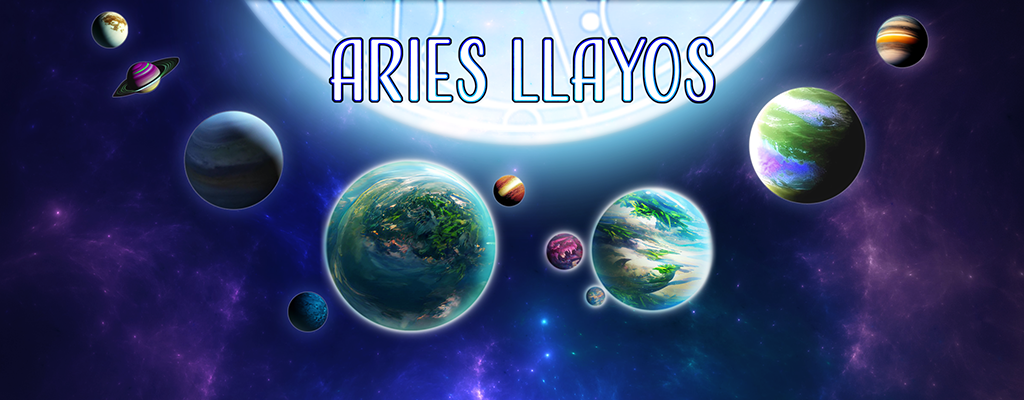
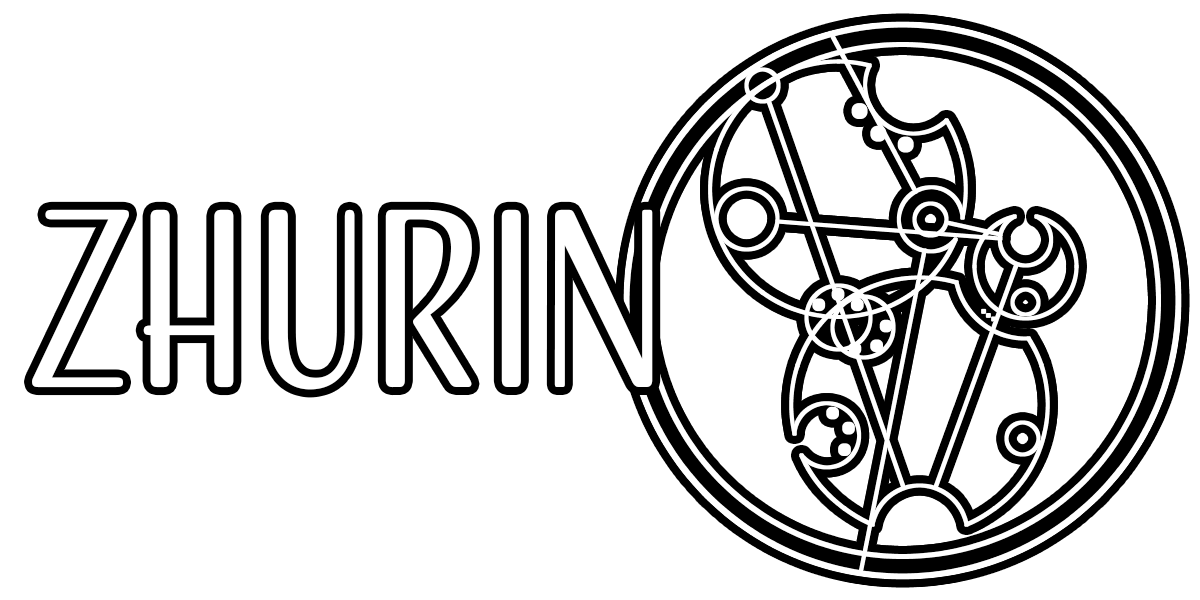
Zhurin is high-fantasy world rife with danger, unique monsters, races and bound fiercely to the powers of the Spirits.
|
[ Draelyk ]
[ Portals ]
[ Dragoste ] While the newest city on the continent of Draelyk, Dragoste is the capital of the feore empire, built within the shadow of the Karr’ai Peak of the Marra’Kar mountains. Like all feore cities, Dragoste was built within the boughs and against the trunks of the great greenwood trees that they’ve lived in for as long as anyone could remember.
When the De’Stregoi family came fully into the power they now have, it was decided that a city must be built near the scolani gateway that Molvonos had opened, which given the location, was likely what the Scolani originally intended -- to keep the gate as far away from feore civilization and society as possible. Unfortunately, beyond the centuries that passed since the Scolani built the gateways, the feore found and activated it against all odds (so the Scolani thought). So just north of Dragoste is where the Gateway is located, with a long, wood-molded pathway leading directly towards the forest city of Dragoste. So what makes Dragoste so special? Well, now that it’s the seat of the Feore’s empire, it benefits from everything that Molvonos and Gemma have done. Far larger than Valdimere Zasabihr and Mawnim, Dragoste is unique in that the city extends all the way to the forest floor, rather than being solely in the upper boughs and treetops of the forest. [ Natural Biomes ]
There are four major Feore cities spread across the continent of Draelyk. The northernmost city, Dragoste, also serves as the capital and sits in the shadow of the Karr’ai Peak in the Ror’nam province. Spiraling almost alien coils of massive briers serve as the main building component of not only the buildings that the Feore live in, but also as one of its primary lines of defense. Invaders not only have to contend with the Feore that know the thick, oversized briar forest but the briers, blood thistles, hooklin bushes, and other vegetation that’s been both bred and naturally evolved to cause ‘prey’ to bleed out over the earth and die from exsanguination. With the largest of briers as tough as wrought iron, Feore harvest and manufacture weapons and armor in Dragoste to be sent to the other three cities as well as the numerous smaller towns and villages scattered throughout the the continent. Dragoste is home to a large magical academy where the various sects of Guards are trained as well as where all feore go to learn what the Spirits have gifted them with.
The southernmost Feore city on Draelyk is Zasabihr, found in the Inaal province just on the coast and only a small river keeps those of the city from the island of Vrykos. Thanks to the inlet into the Tidemoot sea, which spills out into the greater oceans of Zhurin, the Feore are able to supplement their supplies through shipping routes to Sorth and on occasion, Xansai. With the opening of the portal in Dragoste, trade ships are less a necessity leaving more resources for the fisherfolk and Aqueous Guard. Mawnim rests on the sub-continent of Llyreade at the curve of the Nrian river off the western coast of Draelyk. With it’s place off the main continent, Mawnim is regarded as the weakest of the four feore cities because of the time it takes for reinforcements to arrive as well as taking longer to receive goods from the mainland. Llyreade’s forests are less dense than those in Draelyk, with a greater abundance of fauna due to the smaller numbers of carnivorous flora that are found on the main continent and attempts to terraform Llyreade to be more suitable have met with limited success. 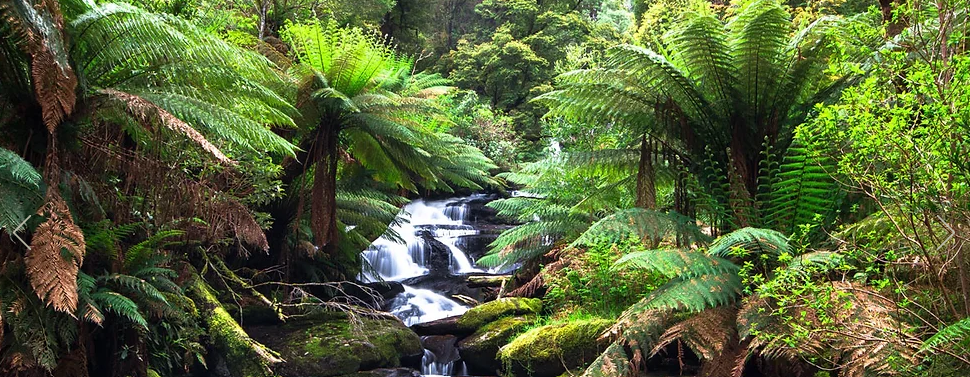 [ Climate ] One of the larger continents, Draelyk is almost entirely covered in forest, with the northern half temperate forest and the southern half dense rain forests, with the occasional mountain range or peak breaking through the green. The climate of the rain forest can be described as balmy, sticky or just uncomfortable to those unused to living in such environments, while the temperate forest in the north is far less humid and a bit cooler. [ Resources ] Lumber: Wood is something that Draelyk is never without and the feore frequently sell lumber in various states to those that inquire about it. While the more mundane sorts of wood is most frequently sold, steelwood (greenwood) as most non-natives have taken to call it, fetches a much higher premium. A single tree of greenwood can be used to create enough weapons for a small army and harvesting the greenwood is a secret that the feore guard jealously.
Food: Nowhere else on Zhurin can an abundance of fruit and vegetables be found. What most might consider exotic grow in abundance and one of the Elifah’s many tasks is to make sure that the fields are properly tended to and their produce growing healthy. Produce from Draelyk tends to last longer and generally taste better than anywhere else in Zhurin. [ Known Dangers ] It’s easy to get lost in the dense forests of Draelyk without a proper guide; even the most experienced tracker outside the realm would find themselves lost in the thick undergrowth. The most dangerous threat in the forests, though, would be the predatory flora that’s marked as the apex predator on Draelyk. Be it the hooklin bushes, mantraps, blood thistles or something less well known, even feore have been known to disappear without trace as the feral, wild nature leaves nothing behind. The feore themselves are also a threat outside of the four major cities. The race is secretive to the point of almost being xenophobic and those living within the wild forests of Draelyk do not hesitate to kill on sight anything that could potentially be deemed a threat and given their generally nomadic lifestyles and natural capacity of blending in with their environment through camouflage, it’s almost impossible to track which tribes are located in the different parts of Draelyk. [ Native Flora & Fauna ] Greenwood Trees A rather simple name for a tree that’s anything but. Greenwood trees are quite literally, green. A thick carpet of moss, algae and various parasitic plants grow on the bark of an evergreen, while the leaves create thick bushes in the boughs, making it almost impossible for larger creatures to traverse through them without experience and training to wade through the leafmatter and find proper, solid footing. Underneath the dense thicket that coats the bark is one of the hardest known, naturally grown substances in all of Zhurin and the feore guard the ability to harvest the wood jealously. Cutting into the greenwood exposes a softer coloration of seafoam green and a thick, similarly hued sap that hardens rapidly. As the sap hardens, it also grows heavier and denser to help the tree heal as well as deter whatever’s attacking the tree. Unfortunate folks who got sap on bare skin have to have it cut or torn away. Greenwood trees are the largest trees found in the Draelyk forests, towering over the rest of the flora and piercing the forest canopy, making them ideal targets for tracking. Most Greenwoods are home to one or two families of feore at any given time, with treehouses built within the dense foliage within the boughs and generally invisible to the naked eye or those unknowledgeable regarding either the tree or the feore. [ Native Races ] The Feore Feore Creation Story Zhurin doesn’t have gods. The people of Zhurin did not just magically come into existence through the divine will of some greater being, though they did have a little help. The scrolls say that Feore precursors were cold-blooded reptilian creatures, akin to chameleons but far larger and more predatory. Zhurin and the spirits that watch over the many lands of the realm follow the tenets of nature; survival of the fittest, and the two races that have become the body and soul of Zhurin are the feore and the scolani. The Feore cannot say for certain when their evolutionary pathway diverted from the cold-blooded reptilian nature that kept them within the forests of Draelyk to that of a warm-blooded, mammalian creature capable of traversing all of the biomes that Zhurin had to offer, but scholars believe that this was the touch of the Spirits, a gift for the race’s ability to not only survive but to thrive in the dense forests of Zhurin that would have and has eaten lesser races incapable of such growth. Feore Racial Description The Feore are a race native to Zhurin that inhabit the forests of Draelyk, with their capital of Dragoste near the Karr’ai Peak in Ror’nam. From a distance, the Feore might pass for a more common human, however as that gap is shortened, it becomes obvious that they’re a race unto themselves. Their eye color range can be almost any variation of brown (light yellow to almost black) as well as the different tints of green. All Feore eyes, however, have little flecks of yellow around the pupil as a result of pockets of cells devoid of melanin. Feore hair tends to be kept long and runs the range from black to a very light brown, but never naturally blonde. When their skin is in its natural state, the tonal range starts at a swarthy olive at its lightest and an almost ochre shade of mocha at its darkest, but the chromatophore layer just under their skin as well as thin strands of chromatophores that core each follicle of hair allows them to change the coloration of their skin and hair much like a chameleon. This defensive mechanism was naturally evolved due to how dangerous the forests of Zhurin can be, much like how the Scolani naturally evolved to regenerate incredibly quickly in the deserts of Sorth. Their skin is highly resilient due to the chromatophores and how they work, literally shifting pigmentation in a ripple of motion depending on the surrounding area, on closer inspection takes on a dense, scale-like pattern, making it harder to pierce or bludgeon. Your average Feore clads themselves in oiled leathers (both flora and fauna) and fabrics (mainly silk harvested from the silkworms they breed in the rainforests of southern Draelyk as well as the subcontinent just off the west coast) of earthy colorations over the brighter hues to help them better blend in with their forested environment, though this practice was made somewhat obsolete when they built their great cities. Those Feore on the higher rungs of their society frequently have enchantments woven into a very mundane piece of jewelry, usually a ring or something that can’t get snagged by local flora or cause them to stand out too much, that allows their clothing to camouflage with them. Feore Racial Advantages • Camouflage: Feore, like most native races to Zhurin, are innately hardy due to the harsh, primordial environment. Unlike the Scolani, who can naturally regenerate any wounds inflicted upon them, the Feore adapted to the heavily forested environment of Draelyk. Like chameleons and cuttlefish, a Feore’s skin has a layer of chromatophores that allow them to change the coloration of their skin in complex patterns to match their environment. This allows them to almost perfectly blend in against a tree, the ground, a group of boulders and the like. When they settled and started building villages, cities and the like, all too frequently when an invading warband came upon a Feore village, they’d find it entirely vacated so as to let their guard down, only to have the entirety of the battle-ready Feore ‘magically’ appear. There are exceptions to the rule, however. Feore cannot properly mimic flowing, fluid elements happening around them; a feore attempting to camouflage in the middle of a flowing river, unless they were bound to the element of water, would display a disturbance in said water that would give away their location. • Toughness: This advantage was evolved in tandem with Camouflage as a way to help them deal with the thorny briars and carnivorous plants that are frequently found throughout the Draelyk forests. The reason Feore are much stronger is due partially to the fact that the skin and muscles have a much more efficient nutrient and waste product transport and that the muscle fibers and skin cells are prismoidal and triangular, as opposed to a human’s rounder muscle fibers and skin cells. This allows more muscle and skin to fit in the same amount of space, and due to the larger size, attributes to the greater strength. • Elemental Bond: At their right of passage, the Feore that survive have to choose a single element (fire, air, water, earth, stasis, creation or void) to bind themselves to. Whatever element that is bound to the Feore also imparts resistance to that element, but not immunity. The elemental spirits do not feel that anyone save for themselves should be entirely immune from the elements touch. – Fire – Flame and Heat. – Air – Wind and Energy. – Water – Water and Fluids. – Earth – Rock and Soil. – Stasis – Ice, Freezing, Stillness – Creation – Flora/Fauna or Life (absence of Death)* – Void – Darkness or Death* [ * Can not master both. They choose one and can only perform basic to intermediate functions of the other. ]
Feore Racial Disadvantages • Allergy: There is a very specific plant that grows deep in the mountains of Mauren that the Feore are highly allergic to. When exposed to it, they break out into a violet rash that disrupts their ability to camouflage, as well as causing painful blisters and boils. Prolonged exposure caused the skin to slough off completely in sheets and ultimately death. This is why the ice-bound Feore make pilgrimages to Mauren in hopes that they can eradicate the plant, but have yet over the thousands of years been successful. • Elemental Bond: At their right of passage, the Feore that survive have to choose a single element (fire, air, water, ice, earth, growth or darkness) to bind themselves to. This happens naturally due to emotional states, preferences and things of that fashion and is not something that can be reversed, changed or the like by any fashion. Feore cannot cast spells involving an element outside of the one chosen. Feore Mindset & Culture The Feore are a curious race. Most of those outside the race itself, aside from a few particularly lucky scholars that have managed to live with the Feore and survived any decent amount of time, have no real in-depth knowledge about them. This is due to an innate, instinctual sense of distrust among the Feore; many loathe discussing their culture and traditions. To learn about Feore culture, one must hear it -from- a Feore to learn anything of significance, even then you may not be told the absolute truth. They are known to be deceptive to those not of their kind which is an aid to the general consensus that they can not be trusted. Often they will give misleading information about themselves. Interactions between Feore and the outside world do not usually prove to be a success as people tend to be very wary of their kind. It is because of this that the Feore do not usually make trips outside of Zhurin, the world that they know, to seek out anything else. That is, until recently. Their savage tendencies, though as natural to themselves as two humans shaking hands, do nothing to help the belief that the Feore are dangerous. The Feore social structure is largely based on tribes and through the millennia those tribes have grown into so much more than the primitive ones they started out as. All through the jungles you will find the Feore homes nestled among the trees, rope, bone and wood ladders and bridges link the decks of their structures and homes. Among these villages you will find the Feore, each tribe are fiercely territorial and protective of their lands. It is not unheard of to have instances of tribal infighting, though it never reaches such extremes where death occurs. Competitive attitudes abound between tribes as well but those are, very usually, seen as games, friendly boasting, ribbing or championing one tribe against another. Every Feorii has to pass a rite of passage when they come of age and there is no room for failure; doing so results in death. The rite is different with each adolescent Feore but the result is the same: the choosing of one of the seven elements (fire, air, earth, growth, darkness, ice and water) to bind themselves to. The ritual also consists of the young Feore taking on a chosen weapon that they will rarely deviate from. Even those that are unable to call upon the magical or psionic energies benefit from this binding as it bestows a resistance to the element. However those with a magical or psionic bent can only call upon the element they’re bound to and quite frequently their elemental bond dictates their role in Feore society. The ritual itself is different for every Feore, with some having to go out, slay some mighty beast (or in many cases, destroy a particularly dangerous carnivorous plant) while others have to find something of worth to bring back. While failure isn’t an option, what dictates failure is rather open ended. A Feore that needs to slay a blood-thirsty Urshrak will be viewed as a ritual sacrifice, as Urshraks aren’t things that a new hunter can bring down without incredible amounts of guile, strength and will. But attempting to kill an Urshrak, failing to do so but surviving the encounter to tell about it? That’s not failure. At the conclusion of the ritual, an elemental spirit that is the most attuned to the Feore presents itself and offers to bind a portion of its power with the Feore. A Feorii that denies the Spirit, for whatever reason, is struck down by the Spirit and killed immediately; which might be why there aren’t any Feore that haven’t bound themselves to one of the elemental spirits. Feore Society Feore society is split into two different aspects that intermingle throughout a feorii’s lifetime. What a feorii does with their life dictates how they’re seen, as word of mouth spreads of their infamy throughout the forests. As a whole, the feore are a nomadic race filled with a wanderlust that’s rivaled by few and every feorii feels the pull at least once in their life, though on average a feorii might drift through the boughs and branches multiple times a year. It is because of this need to wander that feore create potent bonds with their immediate families and anyone that they feel is worthy of skin privileges, going through great lengths to protect both should anything befall either. Each Feorii belongs to a caste that’s dictated by the element that they’re bound to when they complete their rite of passage, but there’s very little by the way of power-struggle between them. The Firdaast, Oeilus, Ereso and Oeleh compromise a larger percentage of the feore population and as the primary four elements go, can serve a wide variety of roles depending on their training. It’s a mistake that many outsiders make, to think that one bound to earth cannot play the role of scout or assassin, or that one bound to air is unable to wade into the thick of battle given the ephemeral nature of their element. With fewer in their numbers, the Elifah, Mersiro and Vaeloss more than make up for that with presence. Not bound by the usual rules that the primary four elements hold, those gifted by Creation, Void, and Stasis generally take positions of power and prestige within feore society. An individual feorii might not fear much within and without of Zhurin, but the feore as a whole are extremely xenophobic and much of what they do is indicative to that. Their need for skin privileges, even among their own kind, mean that most feore have only a very small group of allies outside of their families and despite there being elves, fae and other such creatures living with the feore in the four cities, there are likely dozens of little pockets throughout Draelyk where only feore are allowed. During the years of dusk in a feorii’s life, those that haven’t died from battle or the rigors of Draelyk go off and alienate themselves. Mated couples generally go together, but sometimes there is a division that occurs, especially if the age gap is great enough. Having lived their lives in accordance with the natural ways and Creation, most feore who feel as if their cycle is coming to an end, offer themselves to the Spirits. This is less committing suicide and more simply losing the will to live so that death might take hold. Each location that a feorii goes to for their final days is different. The Vaeloss tend to go to Mauren, where they did most of their training in their earlier years, while Firdaast follow a similar train of thought and head to Sorth. The others, though, find a location within Draelyk closest to the element they’re blessed with. As their final breath leaves their body, the blessing they received blooms. Elifah become vegetal masses, trees or any number of large, dangerous predatory flora, while Ereso disperse into the winds. Each of these elemental creatures were once feore and their power is not directly proportional to the power they had in life. They also have very limited memory, if any at all, as to who and what they were in life, however some houses have taken to binding the spirits of their deceased into constructs capable of withstanding the element in question. Feore Religion Religion on Zhurin is a little different than what most in Creation might expect, as Zhurin never had the touch of gods or goddesses to create sentient life, nor would the Spirits of Zhurin allow outsiders in, protecting the once fragile world until seed had taken root and life was shaped according to their will. Most believe that the Spirits that inhabit Zhurin were offspring of the untapped will of Creation. But what is Creation? Whether or not the natives of Zhurin believe in the Spirits, the Spirits touch is felt everywhere. The Spirits of Zhurin do not care if they have worshippers or not, the murmured whispers of the devout do not empower them. They care for the natural way of things; Survival of the Fittest. From the earliest days of Zhurin, in the deepest parts of the oceans to the highest mountains of Mauren, Zhurin has been a savage, dangerous place. The two primary races that call Zhurin home; the Scolani and the Feore, were not created from nothing, not corrupted from something already existing, no, they evolved, they grew, they faced the rigors of Creation, not only succeeding but excelling. So it is this mentality, of Survival of the Fittest, of culling the weak so that the strong might survive and propagate, that the feore hold true and dear to their hearts. Creation and Nature are foremost in the minds and bodies of the feore, seeing a natural balance in all things, in life and death, in the four primary elements, in light and the shadows it creates. What they cannot abide, however, is the curse of undead, which directly spits upon the whole notion of the Natural Cycle. By taking oneself out of the cycle of life and death, by ‘transcending’, one is creating entropy, which disrupts Creation and stifles the natural way of things. Undead on Zhurin are, thankfully, exceptionally rare because of this. But the feore are as diligent, as fiery about their worship of Creation as any clergy, any priest or druid of their religion. There is no convincing the feore that their beliefs are wrong… because what to the other races have to show to prove superiority? Child-like gods who ruin because of supposed insults? Goodly, bright deities, the best and most holy… casting down the unbelievers into hellish pits and tortuous, fiery afterlives? No, while deities obviously have some purpose in Creation, that which the feore have not yet figured out, they are only a step above those inflicted with the disease of undeath as far as they’re concerned. The Fae Folk Faeries Throughout Creation, Fae have been associated with the wild places and nature and in Zhurin, this is no different. Each realm, each world has different fae because the wilds, the forests and plains, the rivers and oceans are all different, yet still quite ‘natural’. As such, Fae that are found in Zhurin are wild, feral and very dangerous. To think as these beings as the playful tricksters found in other realms would be nothing short of a deathwish. [ Devas ] Extra small - 1-2 inches - Little glowing sprites and pixies that live within flowers. They have their own language consisting of tiny jingles and animalistic sounds. Devas are the least dangerous of the faeries that inhabit Draelyk, but still capable of being deadly if unheeded. Devas tend to fill the ‘Will o’ Wisp’ function of the forest, distracting those wandering the forests, to deadly effect, if the unfortunate victim stumbles headlong into a hooklin bush, mantrap or any of the various predatory flora that call Draelyk home. Closer inspection shows spindly arms and legs with elongated toes and fingers tipped with sharp, curved claws, to enable them to cling to the various parts of vegetation where they call home.
Zhurin's Devas also have a smile that’s just a little too wide, something they’re capable of hiding just by closing their mouths, but with that grin is a mouth filled with sharp, needle thin teeth. Fortunately, the nature of such teeth is they’re too weak and brittle for tearing away skin and flesh and instead, these fae are like mosquitoes, biting just enough to draw blood that they drink. They’re also adept scavengers, using their keen sense of smell and taste to locate decaying corpses and the soft nature of rotting meat is easily bitten into with their teeth. Devas tend to live in small hives, preferring the hollows of trees and the dry, hollowed remains of some of the giant pitcher plants that grow horizontally along the ground rather than hanging upright and are most associated with. Sometimes they’ll find smaller thorns from a zhurin briar and fashion it into a weapon, but being the least intelligent of the fae races, it’s rare. Their use of the magic is instinctual and they only use spells attuned to nature, which is innate to all fae creatures. [ Kabouter ] If Faeries are the De’Basm that tend to the forests and air, then the Kabouter are the De’Basm that tend to the earth, but not the deep places. Both males and females are stout in their nature, both physically and mentally and have rough layers of stone, shale or in some cases, precious gems extending from the joints of their fingers, knuckles, toes, elbows and knees. They love to dig and unearth copious amounts of precious stone and ore, as well as keeping the earth well tilled and oxygenated for all the vegetation throughout the forest.
Sometimes, due to the odd appearance of their face and skulls, they're mistaken for earth elementals when shrouded in their magic, however binding rituals and spells that can effect an elemental, has no impact on a kabouter. Kabouter refuse to dig too deep for one reason or another, but will not give reason when asked. [ Pooka ] In most realms, Pooka are considered innocent, innocuous and playful things, a hybrid of faerie and beast with all the best and worst qualities of both. But what happens when the world they’re born into is a primal, violent place where might makes right and the Natural Cycle of things is venerated? You get Zhurinese Pooka, creatures that make even therianthropes pause. These little beasts travel in packs, generally between six to eight members with one acting as Alpha and the packs are not of a single type of Pooka. These fae are the embodiment of hunger and the need to eat to survive, although the capacity in which they can eat and the amount seems impossible; a pooka can eat up to three times their body weight in their preferred food before becoming satiated.
Appearance-wise, Pooka are as varied as the beasts in Draelyk, as one might imagine. Some share aspects with the great serpents that call the boughs and deep-roots home, while others take on the appearances of the bats and birds, including functional wings. While many of the Zhurinese Pooka appear to share aspects with several of the herbivorous beasts in Draelyk, all are omnivorous and quite capable of eating meat; it all depends on their preferred food. Most Pooka do not wear clothing or armor, using their body’s natural fur, scales, feathers or chitin to provide ample enough covering, nor do they feel a need for crafting weapons, though can and will use them if necessary. Despite their nature, Pooka are not inherently evil, but they cannot be considered good either. Pooka are what they are, nothing more, nothing less. Pooka can use the Nature magic, as well as a limited form of aeromancy or geomancy. [ Sluagh ] Generally regarded as some of the most disgusting of the faerie races, these slippery shadow-skulking beings take on a whole new life in Zhurin. Rarely seen on the surface of Draelyk, the Sluagh live within the deep places, untouched by light and life and are content to live their lives without ever being known beyond their tribes. Most sluagh have very dark features and an oily complexion that allows them to slip and squeeze themselves through some of the smallest of cracks. Their unique physiology also allows them to survive cave-ins, which are somewhat frequent in the deeper caverns, as earth shifts and moves with the life above it.
Sluagh do not wear armor and barely wear clothing, if at all. At most, scraps of leather from any number of the beasts that live in the depths make up what they adorn themselves with, but given the nature of the Sluagh, they end up getting destroyed in their day-to-day activities. While capable users of the natural magic, as all fae are, Sluagh are unique in their capacity to weave the shadows and darkness of the environment they live in as well as being capable users of the geomancy. [ Merfolk ] Defenders of the deep places in the ocean, merfolk are incredibly rare to see by those who don’t also frequent those depths. They answer to none save for themselves, and those who try to instill superiority upon them are frequently dragged screaming into the depths, without regard. So long as the races who live on land do not defile the watery depths, they are allowed to hunt with their boats and magics, so long as they do not take too much. It is unknown where these fae came into being, or rather how, since they rarely interact with the other races, but their general appearance differs from clan to clan. Their lower halves can be piscine, either scaled or fleshy, a cluster of tentacles like that of a squid, octopus or cuttlefish, or serpentine, like a great many eels. There is a distinct difference between males and females, with males generally being far more flamboyant and flashy in coloration and the size of their fins, while females are more subdued. Merfolk are also innately capable of casting, manipulating and maintaining illusions. This is partially the reason behind the tale of ‘half fish, half man’... all merfolk are creatures of the aqueous depths and have little reason behind anatomy that beings on land might have. Their features are extremely exotic, with sharp, almond eyes and large pupils, with but a ring of iris that is bioluminescent, allowing them greater ease with vision in the deep, sun-barren places of Zhurin’s oceans. All merfolk have patches of bioluminescent chromatophores that allow them to communicate when they need to be quiet or they’re having issues seeing one another. There is little in the way of vegetation where most merfolk reside, so with their carnivorous diet, are the tools to hunt and consume their prey. A merfolk’s teeth are very similar to a tiburon’s, being uniquely adapted scales capable of shredding flesh and muscle easily, while also continuously growing, should any get damaged. Also, while they have arms and a skeletal structure in their upper torso comparable to a humanoids, their ‘skeleton’ is actually closer to a tiburon’s, with eighty percent of it being cartilage. Only their skull and spine is made of bone, giving them rigidity, while allowing them to be flexible and streamlined while swimming. Each merfolk has four digits on their hands, an opposable thumb and three longer digits, with the middle being the longer of the three. This allows them to use weapons, write… anything you’d consider being done with hands. However, while they’re capable of delicate touch, this is only capable with a push down the hand (from fingertip to wrist). When a merfolk twists their grip in the opposite direction (from wrist to fingertip), incredible suction is applied through the millions of fleshy filaments (Setae and Septulae) that make up the palm-side of the hand. This is a result of their prey being difficult to grasp or keep ahold of in the watery environment they call home. All merfolk have four sets of gills along the ribs of their torso, which prevents them from wearing any armor or clothing that might cover their means of breathing. Merfolks, as a result, will not willingly expose anything under their chest to the air, as they do not have the proper respiratory tools to breathe through their mouths. Both male and female merfolk have long, flowing ‘hair’ with a singular fin that extends just above the forehead to midway down the back. The fin, attached to strong muscles along the spine, can be extended and retracted at will, and is sometimes used in their day to day to help communicate emotion. The hair is actually thousands of sensory organs that spread out as they swim, giving them a much greater degree of ‘vision’ from things that aren’t necessarily visible, but only within water. This hair is a few shades lighter than their skin tone. [ Satyrna ] Generally regarded as the most grounded of the fae races, they are still born of the hazy lucidity of Zhurin. In many places, Satyrs and fauns are regarded as hyper-sexual beings, and while there is an inkling of similarity with those native to Zhurin, the Satyrna are quite feral and quite adept at traversing the forests with ease. Like most of the ‘lesser fae’, Satyrna wear little in the form of clothing or armor, nor do they frequently use any sort of weaponry, preferring on their own natural defenses as well as what the forests of Draelyk provide. With thick talon-like nails and flexible cloven hooves, a Satyrna is able to climb the Greenwoods with ease, almost able to stand vertically without so much a handhold against the trees. Like most who call Draelyk home, their forms are densely muscled, rather than bulky, allowing a great deal of agility in their movements. Digigrade legs give them much greater strength when it comes to leaping and remaining in place as they traverse the boughs and branches, while the long, silken overcoat protects their form from the elements much like clothing might; this covers their lower body and down their arms, ending just above the elbow.
The only other outstanding feature (aside from ample curves for the females and defined musculature for both genders) are their large, deer-like ears, that can swivel back and forth from the sides of their heads. Generally, they’re kept upright for comfort and hearing normally, but if needed, they can focus their hearing in different directions, to help them figure out where sounds are coming from with pinpoint accuracy. Despite the similarities to goats and rams, Satyrna are thoroughly omnivorous, capable of eating plant matter and meat, depending on what’s most abundant. In an effort to keep a balance with Nature, they will eat only what is in the most abundance, acting as culling agents when absolutely necessary. They make their homes in the boughs of the Greenwood, though unlike the Feore, they do not shape the wood, but rather make intricately crafted ‘hanging villages’ with vines and roots. It should be mentioned that Satyrna love leaping down, sometimes in excess of a mile, between the trees to reach the forest floor. [ Sidhe ] To themselves, the sidhe are the undisputed leaders of the fae races. With the unique capacity to demand respect of their ‘lessers’, Zhurinese sidhe are even more dangerous and violent than most of their kin. They told true to the traditions of Tribe and many of the sidhe camps can be found warring amongst themselves, dragging any other fae unfortunate to get caught in the crossfire into their feuds. Sidhe adorn themselves in clothing made from the finest spun spider-silk from the great arachnids in the forest and all sorts of things considered precious by the fae. Their features are sharp, beautiful and exotic, putting elves to shame, but more times than not their beauty is only skin deep and just under the surface is something far more deceptive. Sidhe, along with the Roj’Stadj, are the darkest that a fae is capable of being within the limits of their race. Frivolous and equally emotional, it is their power within their people that make them dangerous. They’re also one of the few fae that are capable of wielding most magic with equal strength. Because of their tribal nature and how petty they can be, the different camps of sidhe have aligned themselves in four distinct camps: Spring, Summer, Autumn, and Winter. And a sidhe has two halves of the coin that makes up their being: Light and Dark. Each camp believed themselves to be superior over the others, which spurns them on further to warring with one another. What tempers this is that being such emotional creatures, sometimes they lean towards their lighter, happier tendencies and have taken to calling themselves ‘Seelie’ sidhe. Those sidhe who are in the throes of their darker emotions decided, in spite or some childish tantrum, to call themselves ‘Unseelie’ rather than coming up with a more unique moniker to call themselves. Spring and Summer are similar, given the nature of Draelyk, and sometimes work together towards a common goal, at least till infighting destroys whatever cooperation they might be feeling at that time. Spring and Summer sidhe also tend to be Seelie because the sun is bright, life is blooming all around them and there’s few reasons not to be happy. Aside from getting eaten by a mantrap or hooklin bush, of course. In fact, most Sidhe belong to these two camps, as the concept of Autumn and Winter, in the forest-continent of Draelyk, is almost nonexistent. But there are those aligned with the wet seasons, where clouds roil over the forest’s canopy and a torrential monsoon darkens the skies. These sidhe tend to be Unseelie, and why not? When the world is dark and gray, wet and miserable, one can’t help but to fall into their darker emotions, feeling sad, depressed and angry at how terrible the world is. And how everyone should feel their anguish too. [ Roj'Stadj ] While the sidhe call themselves the lords and ladies of the fae, the roj’stadj do not call themselves anything, yet their presence is undeniable. The most nomadic of the fae races, roj’stadj keep very small caravans while they wander the forests of Draelyk, living off of the land and otherwise keeping to themselves. But to think that they’re weak would be a horrible mistake. It is generally regarded that each of the fae races are born from the dreams or fears of the mortal races, the roj’stadj are the Nightmares made flesh. There is an intrinsic fear that their presence instills even in the most haughty of sidhe and most of the other fae races give them a wide berth.
There are seven distinct caravans that the roj’stadj bind themselves into depending on their racial impulses. Some eat and glut themselves, never really capable of filling the void, others desire what they do not have, and should they acquire it? Discard it in favor of their next conquest. Others are lazy, looking to find other ways, more ‘efficient’ ways of doing things that require the absolute least amount of work and others? They indulge in the primal, visceral acts of pleasure. As far as anyone knows, the roj’stadj are the eldest of the fae races on Zhurin, with the sidhe being an offshoot (if you’re to ask the sidhe that, they would vehemently deny it). They are as intrinsic to Draelyk as the feore, some might say, and perhaps it is because of this initial bond between the feore and the roj’stadj that the feore regard all fae as something to be protected and cherished, as the living embodiment of the Spirits, while the fae native to Zhurin regard the feore as Nature’s protectors.
|
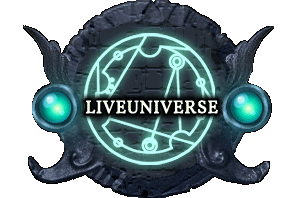

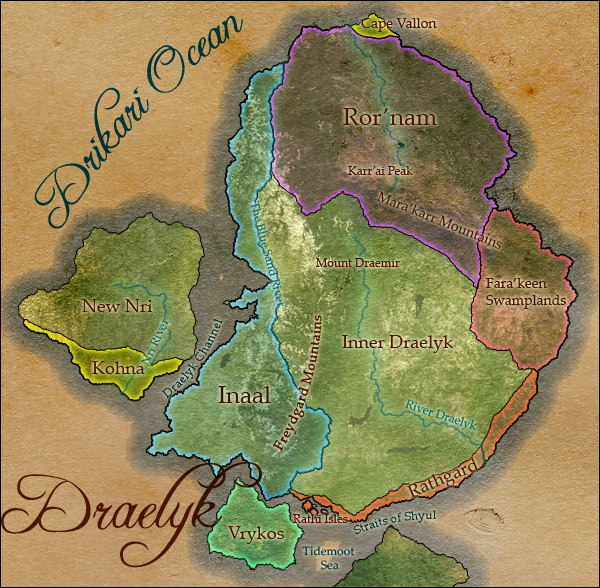
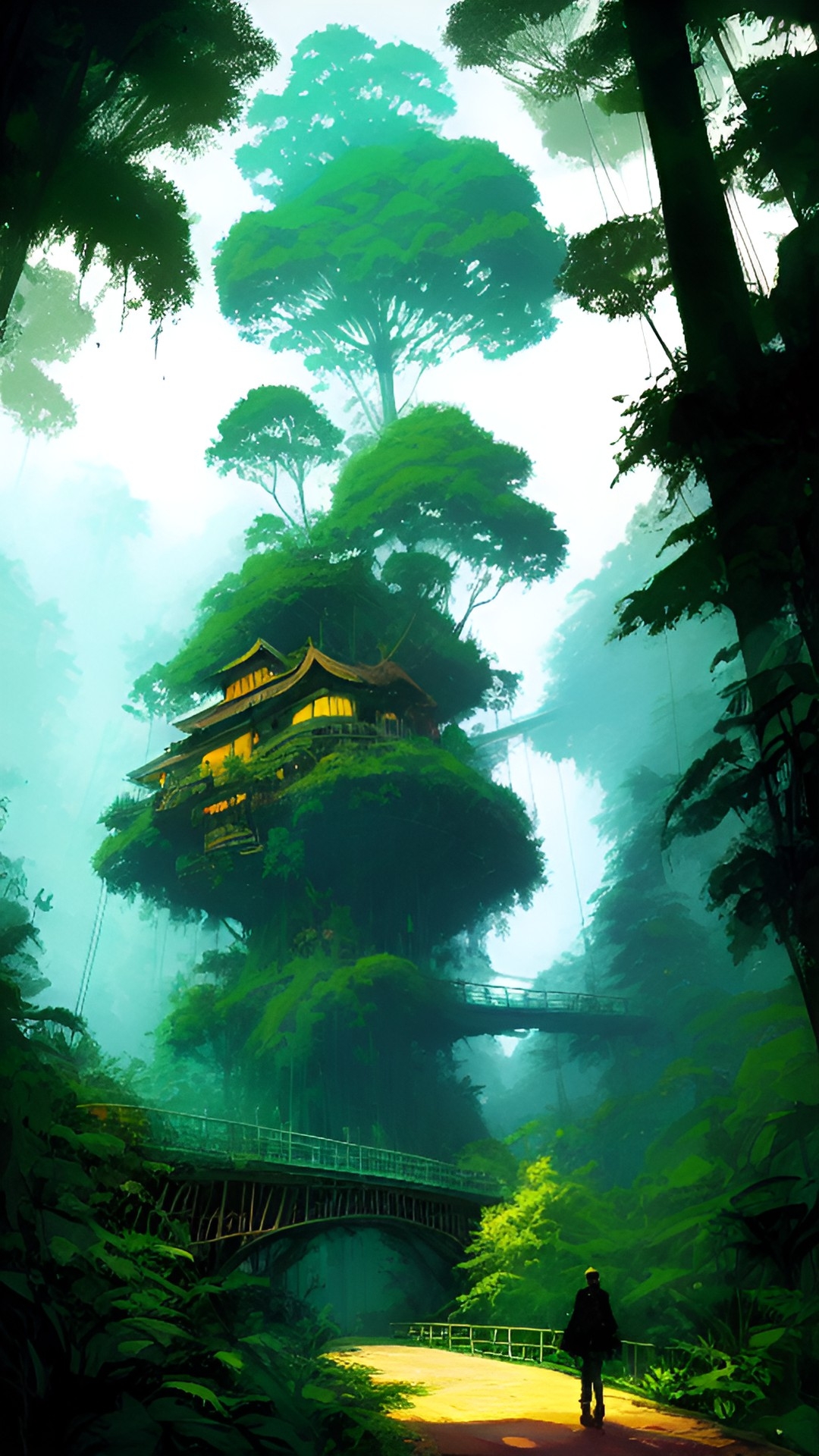
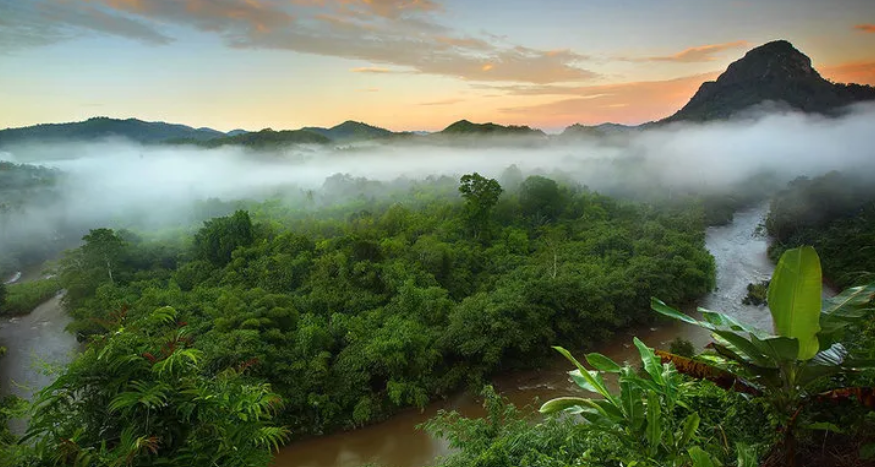 Temperate Forest (
Temperate Forest (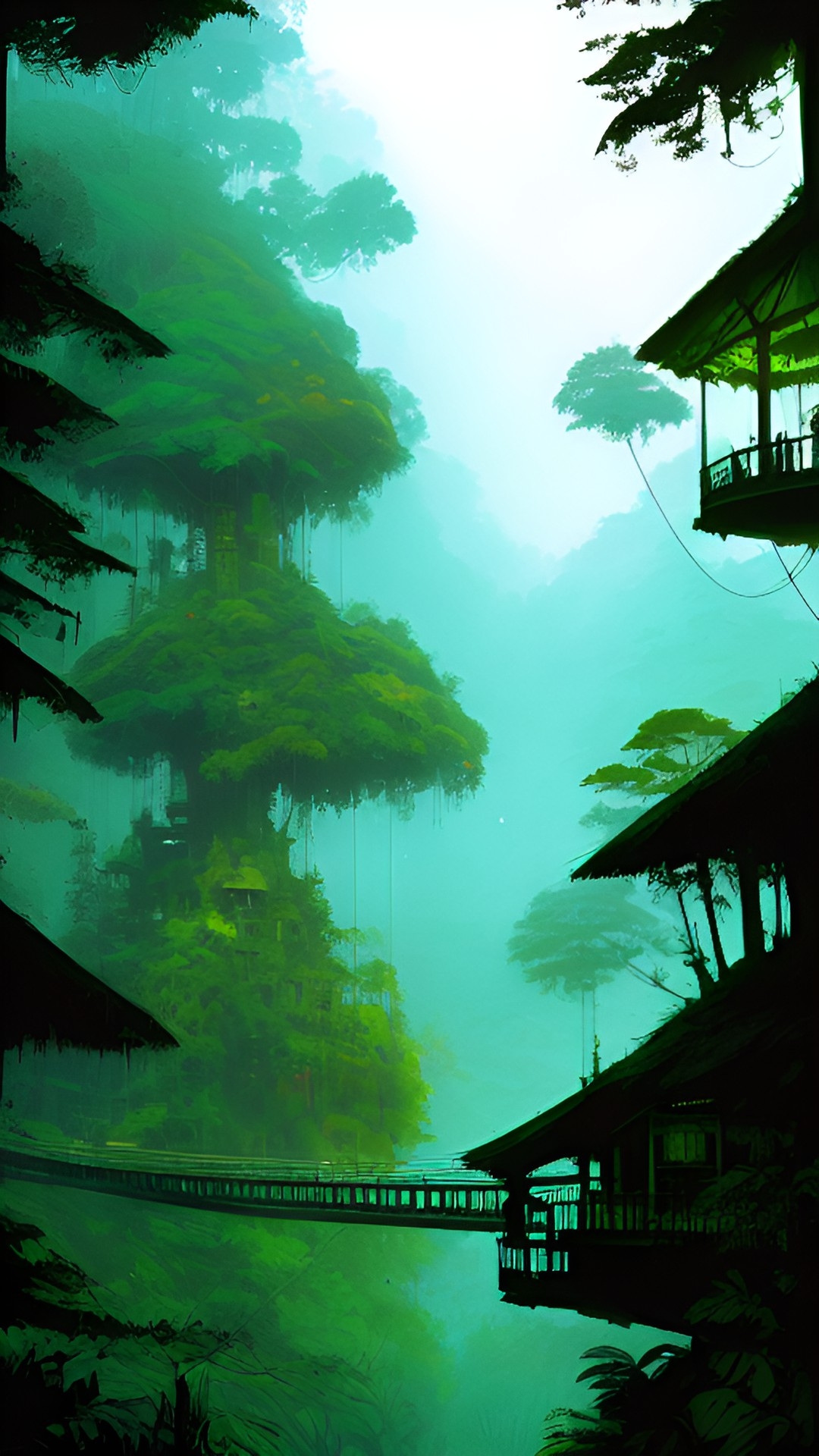 Settled somewhere near the center of the Inner Draelyk is Valdamere, which is the agricultural center of the Feore. However ‘farms’ are vastly different to what most realms might consider appropriate; a very specific sort of carnivorous plant is cultivated for not only the thick, leathery exterior, but the tarry sap they exude when cut into. The sap is used primarily for construction, but is frequently seen in the manufacturing of traps and projectile weapons.
Settled somewhere near the center of the Inner Draelyk is Valdamere, which is the agricultural center of the Feore. However ‘farms’ are vastly different to what most realms might consider appropriate; a very specific sort of carnivorous plant is cultivated for not only the thick, leathery exterior, but the tarry sap they exude when cut into. The sap is used primarily for construction, but is frequently seen in the manufacturing of traps and projectile weapons. 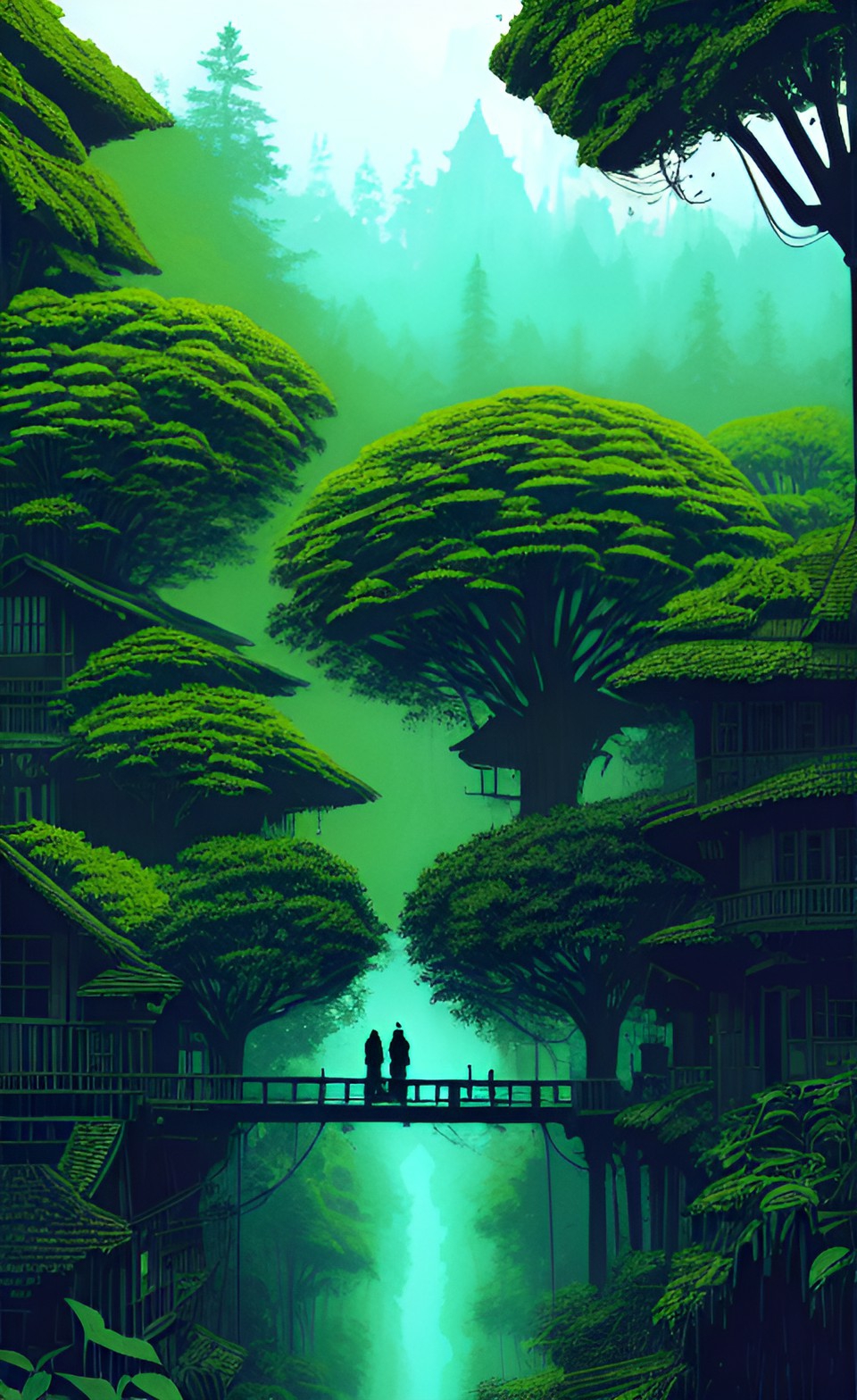 Leathers and Hides: While Draelyk does have its fair share of large beasts that might have wonderful pelts, the leather that the feore trades comes from several of the predatory flora native to the continent. These leathers are naturally waxed, though must be re-waxed from day to day wear and tear, but aren’t any better or worse than those made from animals.
Leathers and Hides: While Draelyk does have its fair share of large beasts that might have wonderful pelts, the leather that the feore trades comes from several of the predatory flora native to the continent. These leathers are naturally waxed, though must be re-waxed from day to day wear and tear, but aren’t any better or worse than those made from animals.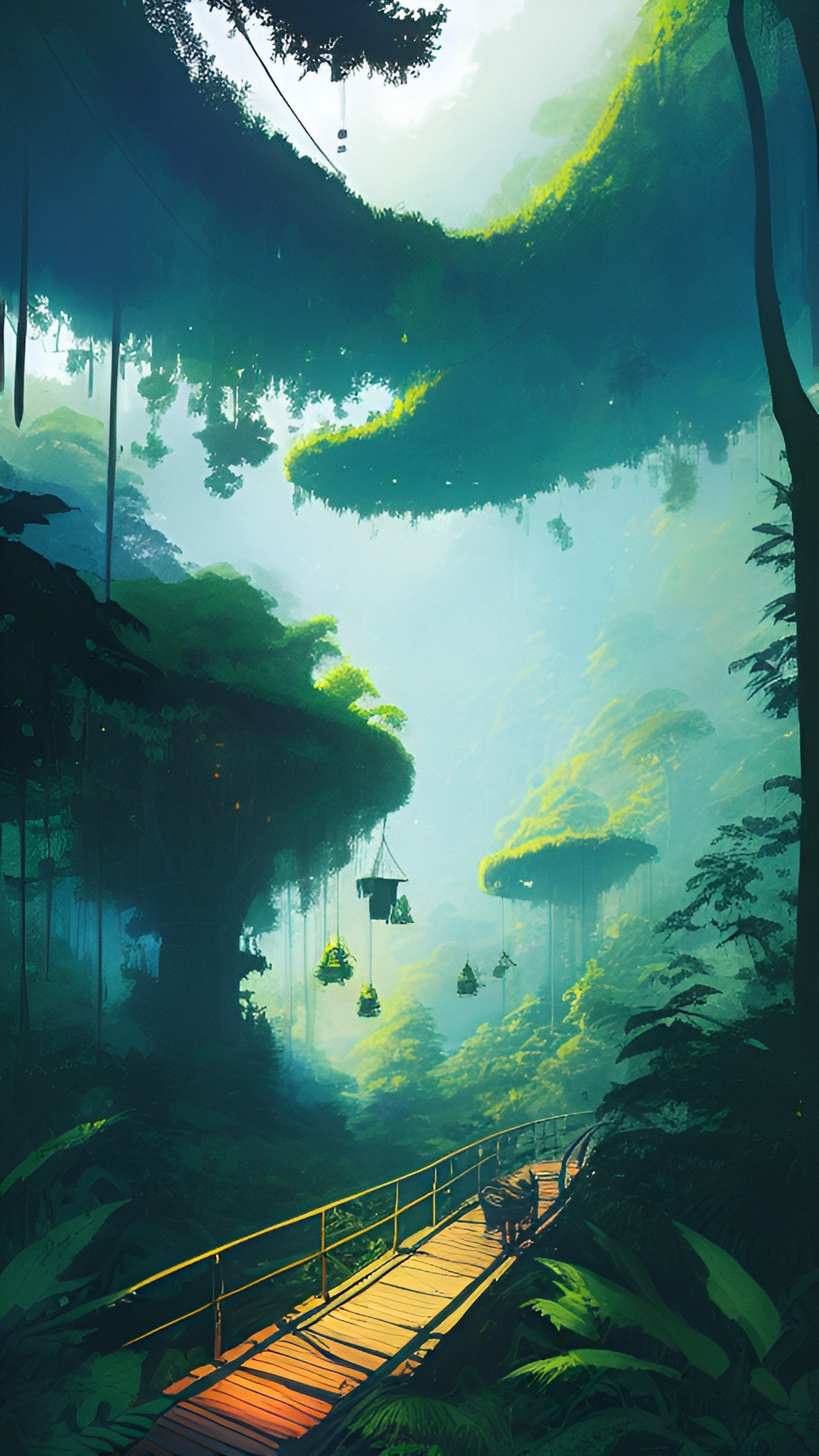 The greenwood tree is the feore’s greatest secret. From first glance, one unaware of what the tree is capable of might see little more than just another arboreal skyscraper, but to the feore, the greenwood tree is the source of much of their weaponry and armor.
The greenwood tree is the feore’s greatest secret. From first glance, one unaware of what the tree is capable of might see little more than just another arboreal skyscraper, but to the feore, the greenwood tree is the source of much of their weaponry and armor.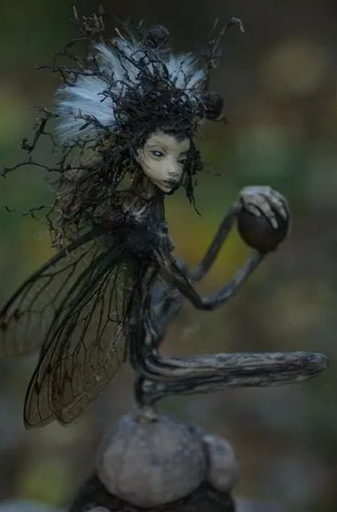
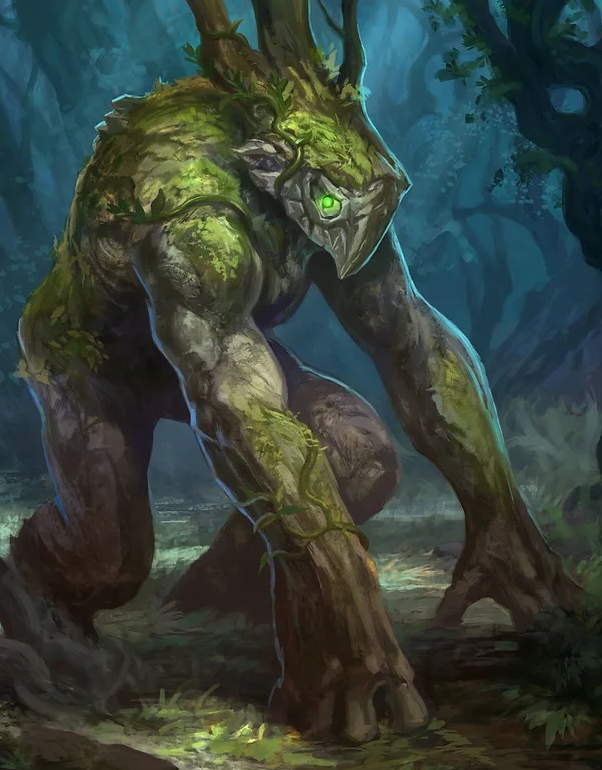 Kabouter clothing is woven from fabric made from root materials that they dig up, particularly hooklin bushes that they despise due to how sensitive the feeler-root system is… it is not uncommon for a Kabouter to be killed by a calcite hook penetrating the earth and piercing the fae’s skull. Not all Kabouter wear clothing, but instead weave geomantic energy around themselves to make their flesh as hard as stone and skin similar in appearance to weather-beaten rock. While inhumanly strong due to their earthy ties, they prefer using small hand-held weapons made of stone, such as hammers and pick-axes due to the raw damage these can do to a living body. The Kabouter are adept users of the geomancy.
Kabouter clothing is woven from fabric made from root materials that they dig up, particularly hooklin bushes that they despise due to how sensitive the feeler-root system is… it is not uncommon for a Kabouter to be killed by a calcite hook penetrating the earth and piercing the fae’s skull. Not all Kabouter wear clothing, but instead weave geomantic energy around themselves to make their flesh as hard as stone and skin similar in appearance to weather-beaten rock. While inhumanly strong due to their earthy ties, they prefer using small hand-held weapons made of stone, such as hammers and pick-axes due to the raw damage these can do to a living body. The Kabouter are adept users of the geomancy. 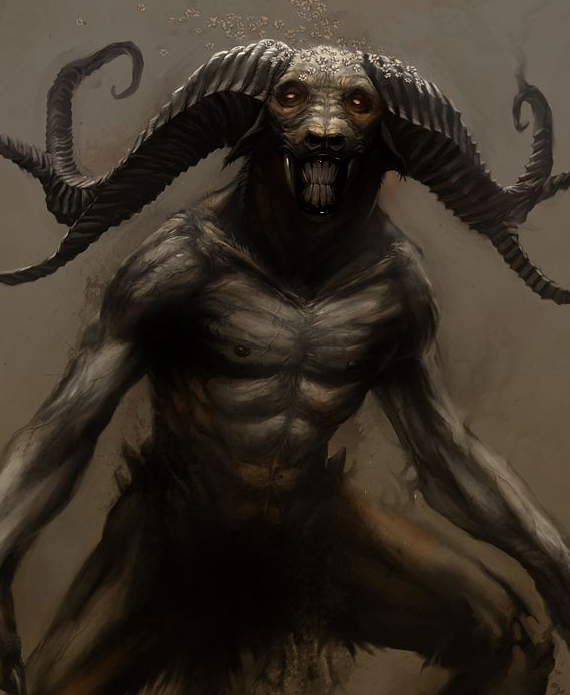 But just because they’re animalistic and show feral tendencies to outsiders does not mean they’re of bestial intelligence. Pooka are just as intelligent as the faeries, kabouter and sluagh, though such intelligence is tempered by emotion and instinct -- sometimes they indulge too much in their bestial aspects and regret their actions afterward. Sometimes.
But just because they’re animalistic and show feral tendencies to outsiders does not mean they’re of bestial intelligence. Pooka are just as intelligent as the faeries, kabouter and sluagh, though such intelligence is tempered by emotion and instinct -- sometimes they indulge too much in their bestial aspects and regret their actions afterward. Sometimes. 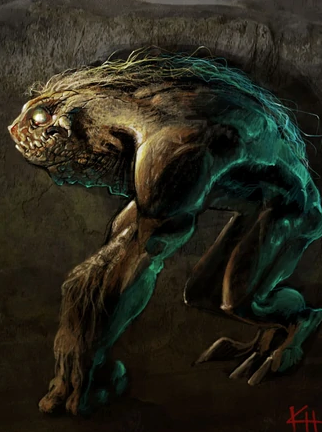 It’s difficult to say what a Sluagh really looks like, given their proclivity of staying as far away from the surface as possible and their ability to stretch and squish themselves. Some say they look like mole-people, with little beady eyes, large noses and overly large hands to allow them to dig through the earth and move rocks much easier. Whatever the case may be, they are seen as disgusting and loathsome creatures.
It’s difficult to say what a Sluagh really looks like, given their proclivity of staying as far away from the surface as possible and their ability to stretch and squish themselves. Some say they look like mole-people, with little beady eyes, large noses and overly large hands to allow them to dig through the earth and move rocks much easier. Whatever the case may be, they are seen as disgusting and loathsome creatures. 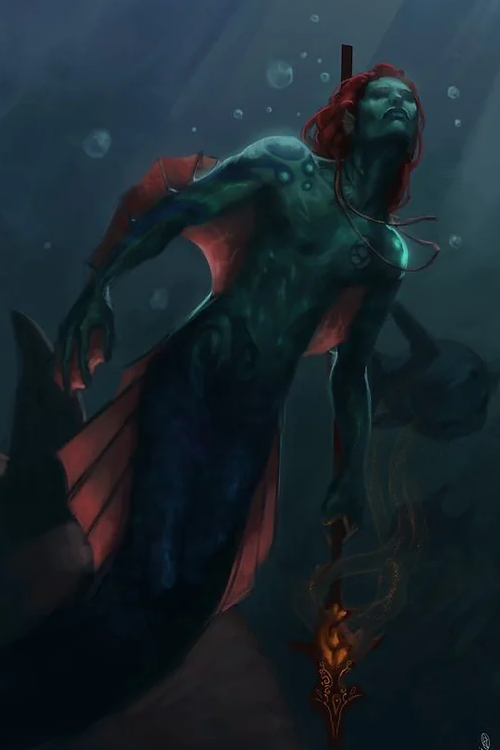
 Under the overcoat is a much soft, nigh velveteen undercoat that is much denser, keeping them warm as well as breaking airflow over their bodies, allowing the Satyrna to move much more fluidly through the air, as well as giving them a means of protection against the rough nature of a tree’s bark. Both male and female Satyrna sport horns, while a males extend straight up, spiraling roughly a foot and a half from the scalp, a female’s horns bow backwards, curling upwards when the horn reaches the back of the head. While they have roughly humanoid features, their eyes are unusual as they, have vertically formed, rectangular pupils, likely a result of trying to capture as much of the falling sunlight that they could, as it broke through the canopy.
Under the overcoat is a much soft, nigh velveteen undercoat that is much denser, keeping them warm as well as breaking airflow over their bodies, allowing the Satyrna to move much more fluidly through the air, as well as giving them a means of protection against the rough nature of a tree’s bark. Both male and female Satyrna sport horns, while a males extend straight up, spiraling roughly a foot and a half from the scalp, a female’s horns bow backwards, curling upwards when the horn reaches the back of the head. While they have roughly humanoid features, their eyes are unusual as they, have vertically formed, rectangular pupils, likely a result of trying to capture as much of the falling sunlight that they could, as it broke through the canopy. 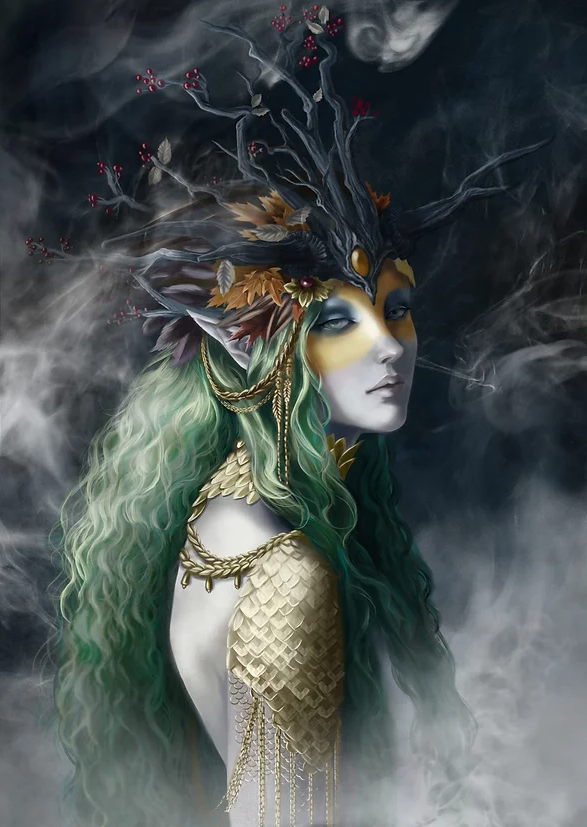
 Appearance wise though? They look no different from sidhe. Very exotic, defined and beautiful, while sidhe are born with more ‘traditional’ colors when it comes to their hair, skin and eyes, roj’stadj are capable of having rather eerie appearances. Pitch-black hair with fragments of what look like ice extending up from their scalp, red sclera surrounding the broken border of brilliant green irises, as examples. Like their sidhe cousins, roj’stadj wear finery in the form of silks and vegetal leathers from predatory flora and can wield nearly all the elements with equal power, but unlike the sidhe, they are not bound into camps. There is no summer, no winter, no dark or light. These fae are bound by their impulses.
Appearance wise though? They look no different from sidhe. Very exotic, defined and beautiful, while sidhe are born with more ‘traditional’ colors when it comes to their hair, skin and eyes, roj’stadj are capable of having rather eerie appearances. Pitch-black hair with fragments of what look like ice extending up from their scalp, red sclera surrounding the broken border of brilliant green irises, as examples. Like their sidhe cousins, roj’stadj wear finery in the form of silks and vegetal leathers from predatory flora and can wield nearly all the elements with equal power, but unlike the sidhe, they are not bound into camps. There is no summer, no winter, no dark or light. These fae are bound by their impulses.